Own label is not all about low prices. It’s home to quality, innovation and experimentation
Own label grocery is on a roll. Again. In the pandemic, value growth fell behind brands for the first time in six years but it’s growing at a serious lick. Up 14.1% , it now accounts for 54.7% of grocery sales (including 2.4% of unlabelled loose items) and 62.6% of volume [Kantar 52 w/e 16 April]. A new record.
The reasons are obvious: incomes squeezed by a cost of living crisis, record high food inflation now at 19% according to ONS figures, households forced into making savings at every corner.
The big beneficiaries are also no big shock. Aldi and Lidl are the own-label specialists, filling their stores with around 90% own-label goods. On those ranges alone, sales are up 26.5% and 28.6%, Kantar data shows, rising markedly faster than any other grocer and leaving the discounters overtrading wildly. Aldi, for example, commands 8.5% of the overall grocery share yet boasts 14.7% of own label. For Lidl, the figures are 6.2% and 10.1%.
But own label is about much more than supermarkets versus discounters. Or who has the lowest prices. It’s also about quality, innovation, and breadth of range. And in this climate, that means one tier in particular. In the words of Nick Carroll, Mintel’s retail insights category director, own label for the supermarkets right now is about being “the best version of your value self”.
NIQ calculates that own-label volumes are up 1.1% [NIQ 12 w/e 25 March 2023] versus a 5.6% decline for branded sales volumes. But the “interesting part”, says Mike Watkins, NIQ UK head of retailer & business insight, is the 14.2% increase in volume sales of value own-label ranges, which has driven a 25.3% growth in spend equating to £648.9m.
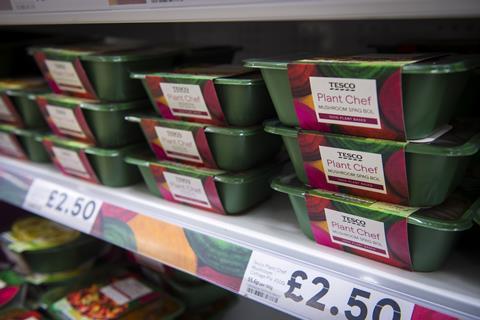
Tesco
Number of own-label products: 5,772
% of total range: 26%
Own-label SKUs (vs 2022): –511
Own-label value sales (vs 2022): 10.6%
Some of this growth is an inevitable consequence of the economic squeeze as many households trade down.
But it is also testament to the efforts of supermarkets to expand and freshen up their economy offers – and slow the shopper exodus to the discounters. “Own label has grown because of the economic challenges a lot faster in the past six to nine months. But it was growing anyway,” says Watkins.
While Tesco and Sainsbury’s have focused on Aldi price-matching schemes, the most notable work in terms of value ranging has come from Asda, where it replaced the slightly drab-looking Smart Price offer (which it needed to do anyway, following its Walmart split) with the sunshine-yellow Just Essentials range.
As well as praise for the 50% increase in the size of the range, Asda was also criticised initially over its use of bright yellow packaging, which acted as a “poverty marker” according to some. But the packaging has turned out to be a masterstroke, with sales up 110%, and contributing to a 16% increase in total own-label value sales. At one point, such was the demand, Asda was forced to bring in rationing as shoppers cleared the shelves of product.
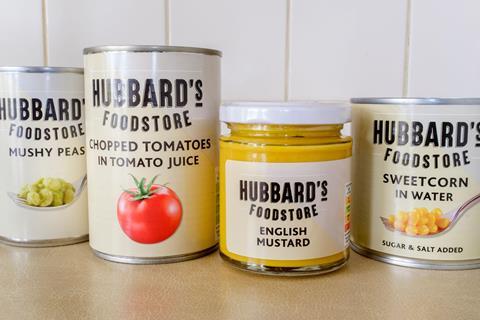
Sainsbury’s
Number of own-label products: 6,280
% of total range: 25%
Own-label SKUs (vs 2022): –155
Own-label value sales (vs 2022): 10.5%
Navigating value
The success of the rebrand shows how the focus for value own label has moved on from tertiary ‘farm’ brands, suggests Howard Wright, executive creative & strategic director at Equator Design, as the emphasis moves to helping shoppers navigate value more easily.
“We recently worked with Morrisons on its new-look Savers range,” says Wright, “and the focus was very much on shunning the embarrassment past generations might have felt when putting budget range items into their trolleys and, instead, celebrating the joy of making savvy financial choices.”
But for all the rebranding and rocketing sales, value tier still remains a tiny fraction of private label’s overall value at 2.8% by value and 5.2% by volume [Kantar 12 w/e 16 April 2023].
The real money is in mid-tier, which makes up a whopping 86.9% of own label, according to NIQ. In fact mid-tier own-label share is now almost neck and neck with brands at 45% of the entire take-home grocery market by value, according to 12-week Kantar data – worth over £60bn. By comparison, branded grocery holds 45.3% share.
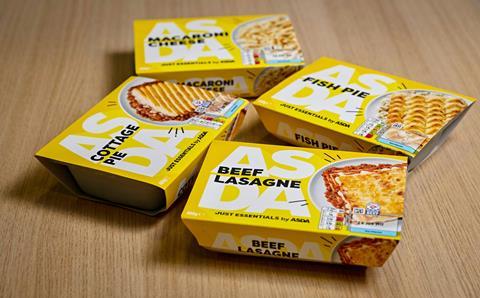
Asda
Number of own-label products: 5,347
% of total range: 24%
Own-label SKUs (vs 2022): +338
Own-label value sales (vs 2022): 16%
Neck and neck
That places mid-tier as the key battleground in own label’s tussle with branded rivals. It’s these products – typically branded with just a supermarket logo – that “keep brands honest” by offering alternatives that are “nearly as good at a much lower price”, says Cyrille Filott, head of the consumer foods team at Rabobank.
And they’re winning the tussle: though volume sales of standard own-label products are in fact down 1.5%, value sales are up 13.5%. In contrast, while branded sales have increased 5.4%, volumes have fallen 7.5%.
Their advantage stretches further than just being the cheap alternative, though. Supermarkets feel their mid-tier ranges give them an edge in agility, innovation and product development, allowing them to experiment and refine as they cater to exactly what their shoppers want.
Take plant-based. Initially driven by brands, Asda points to how its new OMV Deliciously Vegan range, launched in January, alongside the expansion of its Plant Based by Asda range, has led to 86 new SKUs across the two brands with more launching throughout the year. Similarly, Tesco expanded its own-brand plant-based range by more than 80 products under Plant Chef and Wicked Kitchen last autumn, maintaining its position as “the largest plant-based range in the market”.
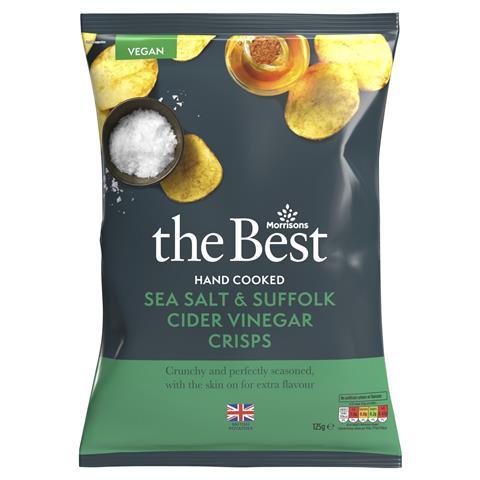
Morrisons
Number of own-label products: 4,280
% of total range: 22%
Own-label SKUs (vs 2022): –61
Own-label value sales (vs 2022): 1.7%
Such expansion and experimentation is made easier within own label thanks to the close proximity of internal buying teams, says Mintel’s Carroll. “It is easier to innovate and get on shelf if you are within the business, rather than having to go through buyers, get a listing, and all that jazz.”
There is also “a sense of private label being able to take more risks than a brand can because of more frequent updates to private-label ranges”, he adds.
These plant-based ranges also highlight a second point: that supermarkets are leveraging own label to prove to shoppers they share values. “A consumer needs to believe in the retailer as a holistic force for good, with aligned values around sustainability,” claims Caroline Dilloway, MD at StormBrands.
These plant-based ranges are proof of how own-label ranges are no longer being framed only by price-based tiering. As Wright adds: “Ranges in this day and age must move beyond the generic essentials to include options that address consumer health, environmental as well as quality concerns”.
Ben Davies, a former Sainsbury’s buyer and the founder of NPD consultancy Vypr, has seen first-hand the “emotional experience” of food shopping. “If we all just bought the lowest-price product for whatever we wanted, it would be utterly joyless.”
While true for value and mid-tier, it’s particularly the premium own-label space where supermarkets believe they can really shine. Watkins points to a 2021 survey by NIQ, which found 54% of shoppers thought premium tier was just as good as leading brands. “People are moving their spend from brands to own label because they know the quality is just as good and it can be cheaper – or even better,” he says.

Waitrose
Number of own-label products: 4,164
% of total range: 21%
Own-label SKUs (vs 2022): –179
Own-label value sales (vs 2022): 5.9%
Treating in
That’s why switching to fancy own label shouldn’t be considered trading down from brands, Watkins adds. The real tradedown is from out of home. “I often use a pizza example. You can go out to buy a pizza at a restaurant, you can buy from Domino’s, or you can buy a premium pizza, from the supermarket. That’s where you’re finding the tradedowns.”
Others highlight Marks & Spencer meal deals as the epitome of the pivot of out-of home occasions to in-home ones. While “not the cheapest place to shop”, M&S is “very diligent in making certain” consumers get bang for their buck, says IPLC partner Richard Harrow.
And what’s good for cash-conscious shoppers is also good for supermarket margins. “One of the challenges over the past year has been margin erosion,” says Davies. “The traditional retailers have had to invest so heavily in price not just to match Aldi and Lidl, but also to control the kind of input prices suppliers have been putting through.”
That means supermarket shareholders “will want more of a profit drive this year and they can’t do that through value own label,” he adds. “So, premium tiers and premium innovation will give them a route to drive that type of margin strategy.”
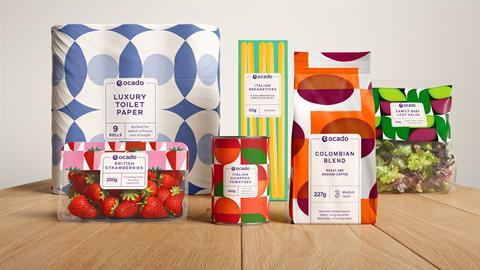
Ocado (including M&S)
Number of own-label products: 5,043
% of total range: 14%
Own-label SKUs (vs 2022): –997
Own-label value sales (vs 2022): 12.5%
Wright at Equator agrees premiumisation “presents the largest scope for growth”, though he stresses that “the definition of premium is a product that offers more – and that’s not necessarily about quality or pricing.
“It is increasingly about experience, uniqueness and the choices that matter to shoppers. As a result, retailers are expanding their menus in terms of what they offer.” He points to Morrisons’ The Best tier, which “now contains free-from and vegan products, new global flavours and mocktails”.
These launches are helping own label offer the same level of comfort and connection that hugely benefited brands during lockdowns. It’s a key consideration for retailers: how to establish trust in private label that global brands have earned over decades, says Watkins.
Given the double-digit inflation in food and drink, this task might soon be achieved, Davies adds. “The tailwinds for own label are huge at the moment. Retailers don’t need to look very hard to capitalise.”

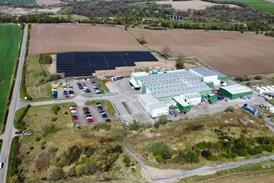





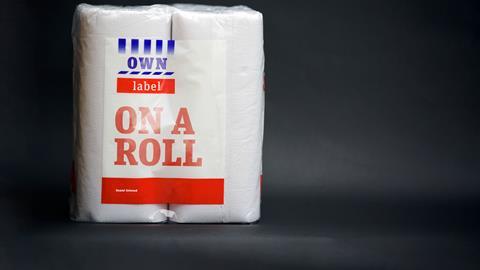


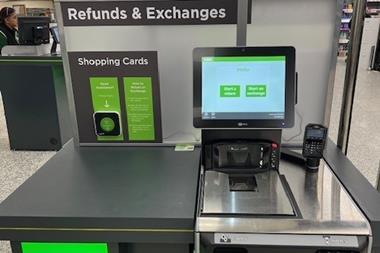
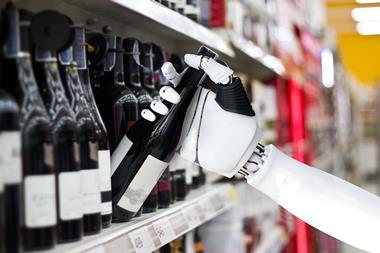

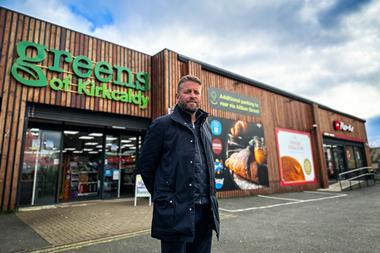

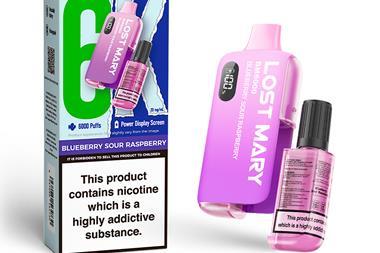

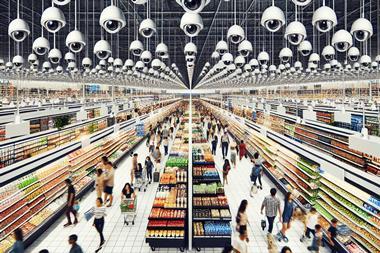


No comments yet